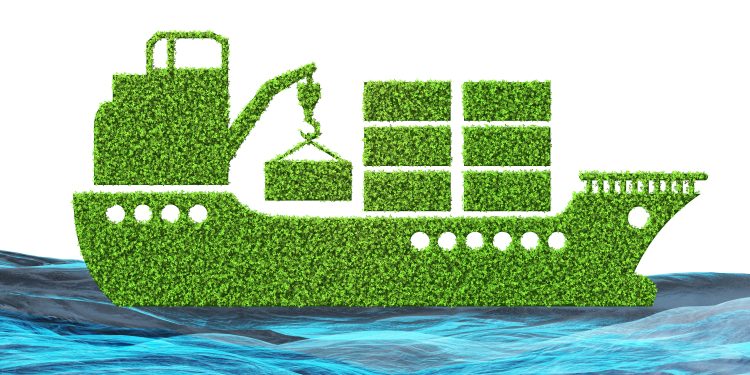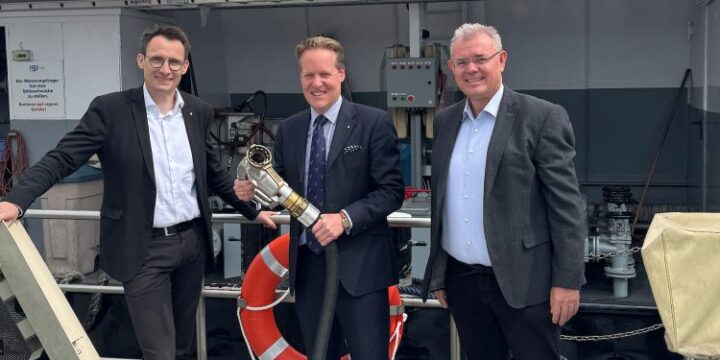July 29, 2025

Starting 1 August 2025, new amendments to MARPOL Annex VI will require ships to collect and report more detailed fuel oil consumption data. Lloyd’s Register has provided clarification on the definitions of “under way” and “not under way” for accurate reporting in SEEMP Part II.
Amendments to MARPOL Annex VI Appendix IX enter into force on 1 August 2025 that require ships to collect and report additional fuel oil consumption data in a calendar year.
This additional data includes: Fuel oil consumption per consumer type and fuel type (including main engines, auxiliary engines etc), fuel oil consumption while not underway per consumer type and fuel type, onshore power supplied to the ship, laden distance travelled, installation of innovative technologies, total transport work.
Updates to and review of the SEEMP Part II
In accordance with MARPOL Annex VI Regulation 5, the ship’s Ship Energy Efficiency Management Plan (SEEMP) Part II will require amendment and review by the flag Administration or Recognised Organisation before the subject ship collects the associated data.
Collection of data for existing ships after 1 August 2025
Ships that hold a verified SEEMP Part II and are collecting the data within the current MARPOL Annex VI Appendix IX before 1 August 2025, are expected to continue collecting this data after 1 August 2025 until 31 December 2025. This is to ensure that the data collected and reported is consistent throughout the calendar year. In any case, these ships will be required to collect the additional data in the Annex to MEPC.385(81) from 1 January 2026.
Collection of data for new ships after 1 August 2025
For ships that enter service and start collecting data on or after 1 August 2025, it is expected that such ships will collect the data (including the additional data) in the Annex to MEPC.385(81) as they had not collected any data before the amendments entered force.
Section 7 of MEPC.395(82) sets out the recommended methods to collect this “new”, more granular data related to fuel oil consumption per consumer type. This includes the following primary methods:
- Using flow meters
- Bunker fuel oil tank monitoring
Section 7 of MEPC.395(82) further sets out the following methods which may be used if the primary methods above cannot be applied:
- Using subtraction
- Using estimation
In the case of using one of these secondary methods, it should be demonstrated why one of the two primary methods cannot be used. Where the Estimation method is adopted, prior approval of the procedure followed to estimate the fuel consumption for the consumer type is required from the Administration.
“Under way” and “not under way”
During MEPC 83, the methodology for developing a SEEMP was further amended in Amendments to the 2024 Guidelines for the Development of a Ship Energy Efficiency Management Plan (SEEMP) (Resolution MEPC.395(82)) which were adopted in MEPC.401(83).
These Guidelines clarify that “Under way” is considered as the period between full ahead on passage (FAOP) and end of sea passage (EOSP) as per the Guidelines for Setting up a Maritime Single Window (FAL.5/Circ.42/Rev.3) and therefore “Not under way” is the period between end of sea passage and full ahead on the following passage. Accordingly, the distance travelled, and hours are now to be recorded only when the ship is “Under way” as per MEPC.401(83) and not when under its own propulsion.
According to Lloyd’s Register, the distinction between “Under way” and “not under way” is when a ship:
- A ship is not under way when it starts anchoring operations, drifting, ship-to-ship transfers, or a canal passage which requires deviation from transit speed and would trigger an EOSP.
- Concluding such operations and reaches FAOP, triggering the start of the ship being “under way” again.
- This would imply that going forward, ships are to start adopting voyage reporting instead of daily reporting methodology, to ascertain the fuel consumption, distance travelled and hours.
What shipowners and ship managers should do now
Shipowners, ship operators and ship managers should consider this data collection at an early stage to ensure the necessary equipment and procedures are in place on board for the 1 January 2026 deadline.
Clarification of data collection dates
The IACS has adopted a Unified Interpretation (UI MPC131) which clarifies that additional data should not be collected and reported part way through a calendar year. In addition, the IMO has agreed to the same understanding, which is communicated in MEPC.1/Circ.913 (Guidance on the Application of the Amendments to Appendix IX of MARPOL Annex VI (Resolution MEPC.385(81)).

